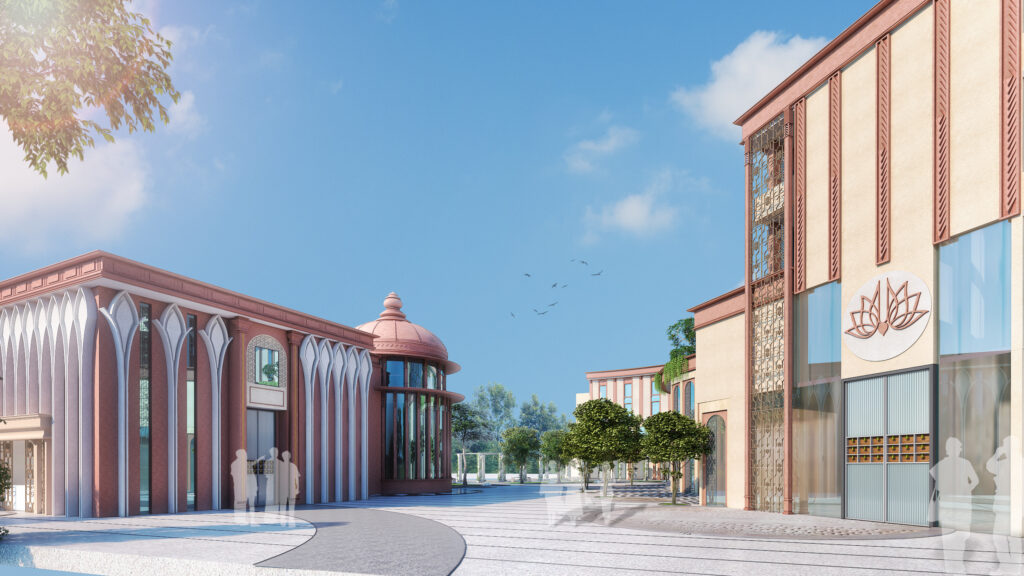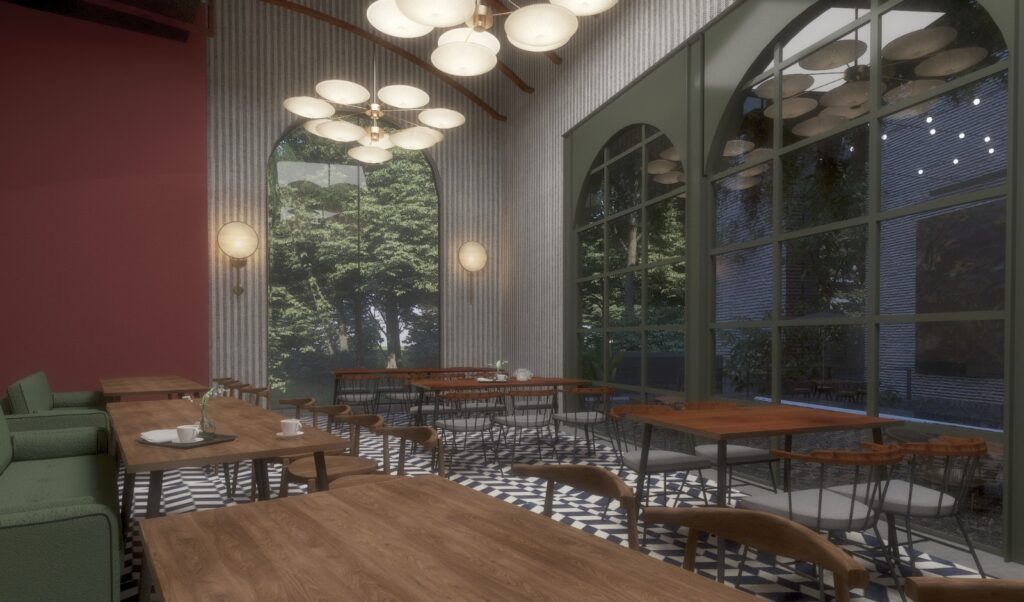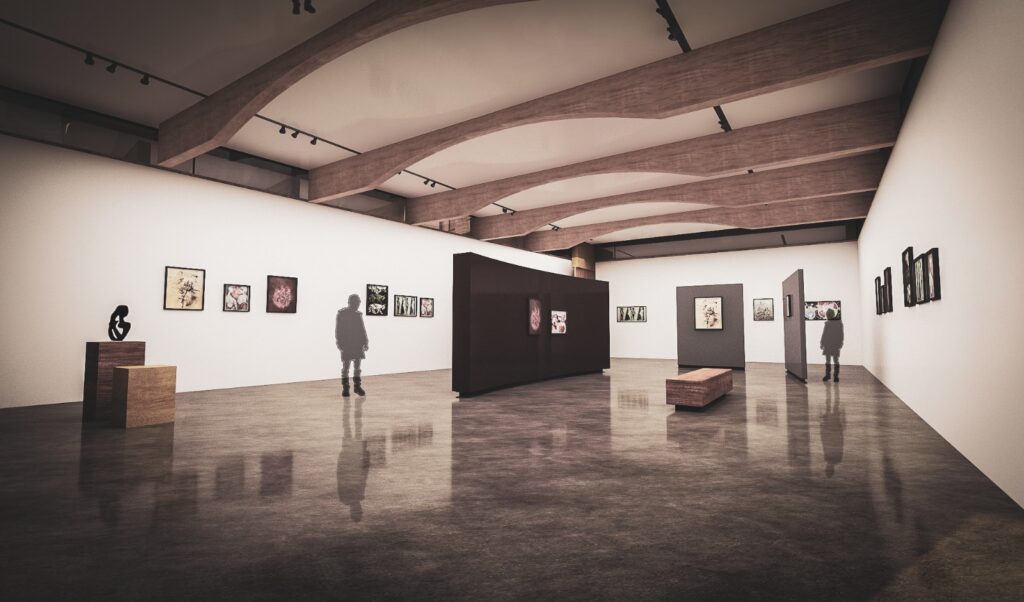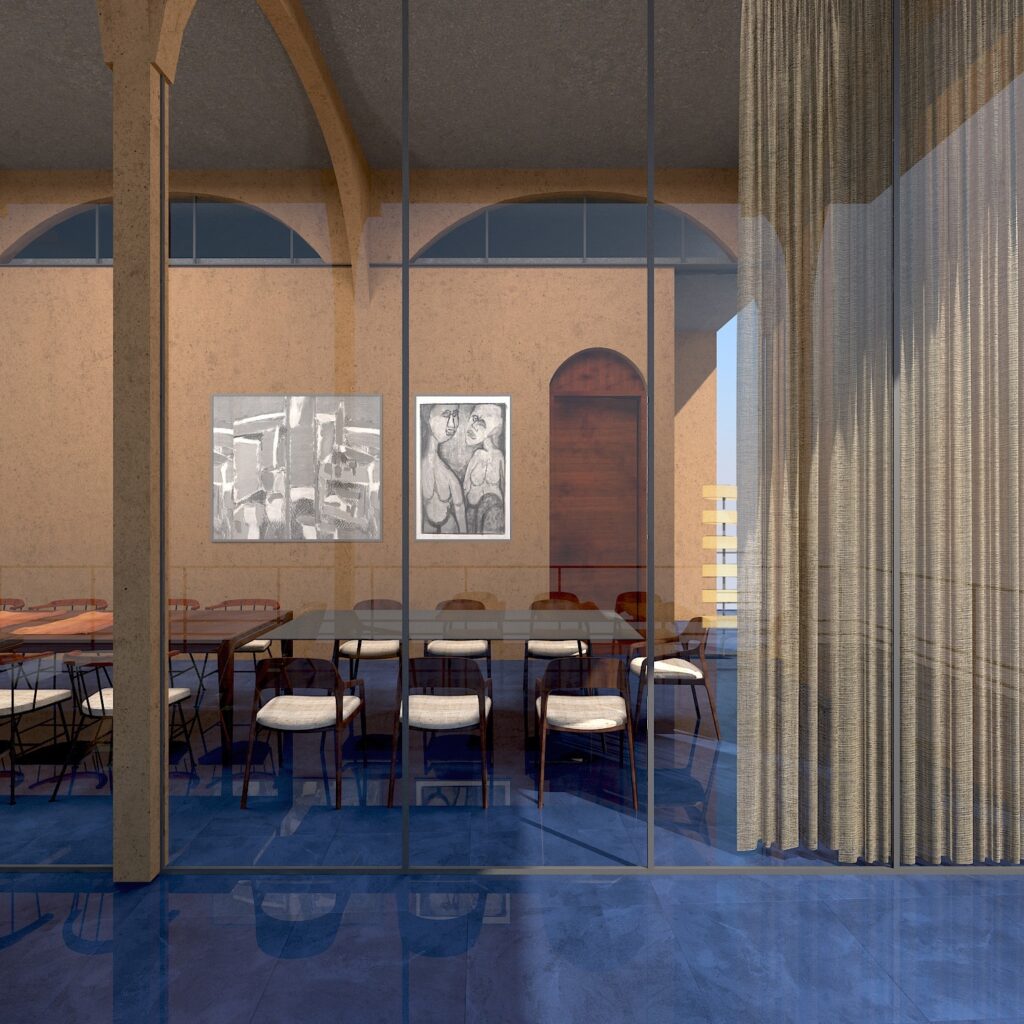Project- Iskcon Temple Complex, Vrindavan
Topology- Temple
Location- Vrindavan, UP
Year- 2024







A sanctuary where stone listens, breathes, and remembers.
In Vrindavan, where myth lives in the dust and devotion curls through morning air like incense, the ISKCON temple complex rises not as a monument, but as an offering. Its architecture does not scream for attention — it invites stillness. It is an architecture of devotion, not spectacle.
Crafted from locally quarried stone, the complex is born of the very earth Krishna once walked. The ochres, pinks, and pale creams of its facades shift gently with the sun — never static, always breathing. The spires, like prayers made visible, rise from broad plinths, their silhouettes recalling ancient temples, yet detailed with quiet restraint.
Inside, the design is not about grandiosity but orchestration of experience — a journey from the clamour of the street to the hush of the sanctum. Courtyards unfold like pauses in music. Light is used sparingly, but meaningfully — filtering through carved jalis, casting lace-like shadows that dance slowly across stone floors as if time itself has slowed to contemplate.
Walkways, shaded and rhythmic, draw pilgrims through landscaped gardens and reflective pools. These are not embellishments but moments of recovery — designed for feet tired from travel, minds heavy with longing, or hearts seeking quiet reassurance. Each threshold, each step up or turn of the path, feels considered — not in a functional sense, but in the way a poem is considered.
Yet, for all its poetic intent, the complex is deeply practical. It holds and moves thousands. It shades and shelters. It listens to the climate and responds — not with glass and steel but with ancient intelligence: thick walls, soft air movement, and tactile surfaces worn smooth by touch.
This is not architecture that tries to rival the divine. It makes space for it. In this sense, the ISKCON Temple Complex is less a design, more a gesture — toward belief, memory, and the quiet drama of arrival.